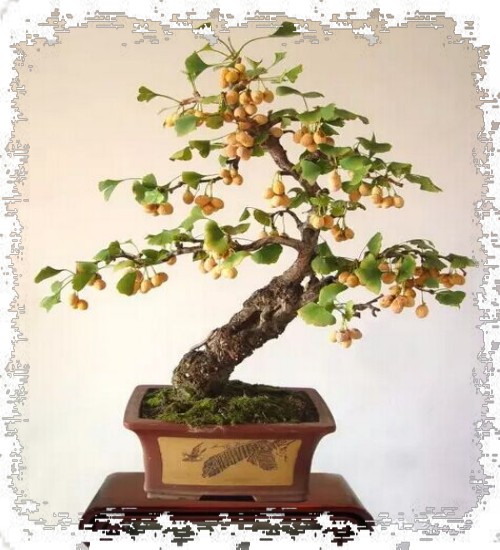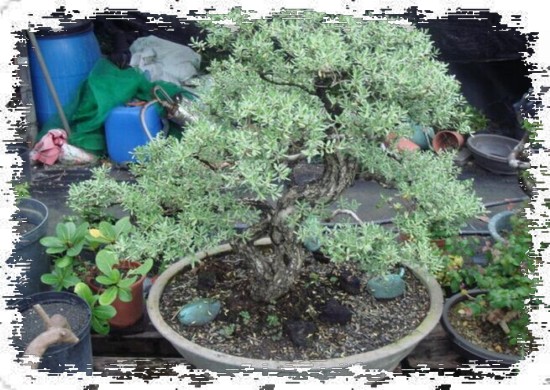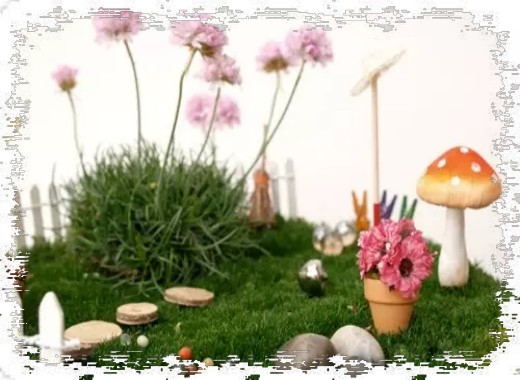Production Technology of hanging Fruit Bonsai of Ginkgo biloba
Ginkgo tree is also known as ginkgo tree, also known as duck foot tree or Gongsun tree in ancient times. It is one of the most precious tree species in the world, and it is the only species of ancient ginkgo that survived on the earth, so botanists regard it as a "living fossil" of the plant kingdom, and together with cedar, Nanyang fir and gold pine, it is called the four major garden trees in the world. Horticulturists in China often compare ginkgo with peonies and orchids as the "three treasures of the garden" and respect it as a national tree.

Ginkgo hanging fruit bonsai can be divided into: one branch alone (single branch), two wings flying (two branches), and three tripods (three branches).
Materials:
Bonsai soil: use fertile fine soil, organic fertilizer (such as rapeseed cake, animal manure), mixed with high-quality N, P, K compound fertilizer 0. 5%, the pile is rotten.
Production:
Leave 4-5 small holes for air permeability and water seepage in the lower part of the middle container. Bonsai rootstocks of Ginkgo biloba can be cultivated with seeds or 1 ~ 3 years old seedlings. The seedlings of Ginkgo biloba were heart-picked and bred into rootstocks of single branch, 2 branches and 3 branches respectively, so as to cultivate "one branch alone", "two wings flying" and "tripod stand". In the middle container of seeded or planted seedlings, press 0. 5m × 0. The specification of 4m is placed on flat ground, surrounded by fine soil to conserve water and fertilizer.
Seedling planting was carried out in October. Sowing takes place in spring. Grafting was carried out in autumn at 12-16 ℃ (mid-late March).
Grafting:
1 ~ 3-year-old flower bud branches were collected in the middle of the fruit mother tree and grafted by cutting or split grafting: "one branch alone" scion can use 3 or 4 flower buds, preferably with terminal buds; "Biyi Shuangfei" and "tripod stand" scions have 2 or 3 flower buds per branch.
Choose this period of grafting, the interface can not only heal, but not germinate, and it will blossom next spring. The female flowers were artificially pollinated after maturation. 45 days after pollination, the ovule was obviously enlarged and the seeds entered the prosperous stage, and 2-3 seeds were selected for each branch to strengthen the management of water and fertilizer, which could not only grow seeds from flower buds, but also extract new branches.
In June, the intermediate containers can be removed, transplanted into pots and bowls, and put into the flower market, which will certainly achieve considerable economic benefits.
Time: 2019-05-26 Click:
- Prev

The method of making jade hibiscus bonsai
Jade hibiscus, the scientific name cactus, is the general name of the cactus family of Caryophyllaceae, alias cactus, cactus fan, overlord tree, flame, fire cactus, jade hibiscus, pill, fairy meat, fairy, often grow in desert and other dry environment, is a class of succulent plants. Primitive cactus plants have leaves.
- Next

Teach you to create your own bonsai garden
The green botanical garden has its own life, and the vitality of every plant brings us more insights into life. If you live well in your own world, you can live better in the outside world. Gorgeous flowers and lush lawns are supported by soil and roots.
Related
- Fuxing push coffee new agricultural production and marketing class: lack of small-scale processing plants
- Jujube rice field leisure farm deep ploughing Yilan for five years to create a space for organic food and play
- Nongyu Farm-A trial of organic papaya for brave women with advanced technology
- Four points for attention in the prevention and control of diseases and insect pests of edible fungi
- How to add nutrient solution to Edible Fungi
- Is there any good way to control edible fungus mites?
- Open Inoculation Technology of Edible Fungi
- Is there any clever way to use fertilizer for edible fungus in winter?
- What agents are used to kill the pathogens of edible fungi in the mushroom shed?
- Rapid drying of Edible Fungi

